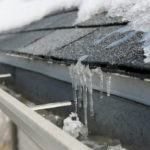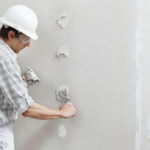
Here Are Some Benefits Of Siding Your Home
Regarding improving your home’s curb appeal, siding can be a game-changer. Not only does it add a stylish look to your property, but it also helps to improve energy efficiency, saving you money on your utility bills. Siding is a durable and low-maintenance option that can protect your home from harsh weather conditions, pests, and other external factors that can damage your property.
With an extensive range of siding materials and colors, you can customize your home’s exteriors to match your style and taste. Whether you’re looking to give your home a facelift or improve its energy efficiency, siding is an excellent investment that can add value to your property and enhance its overall appeal. In this article, we’ll explore some of the benefits of siding and how it can transform your home’s exterior. Benefits of siding for your home’s curb appeal and energy efficiency
Siding is an excellent way to enhance your home’s curb appeal and energy efficiency. Here are some of the benefits of siding for your home:
Enhanced curb appeal
Siding will transform the overall look and feel of your home’s exterior, adding a stylish and modern touch to your property. With a variety of siding and colors, you can customize your home’s exterior to match your style and taste. Siding can also cover up unsightly blemishes on your home’s exterior, such as cracks or chips, giving your home a nice fresh, and inviting appearance.
Improved energy efficiency
Siding can also help improve your home’s energy efficiency, saving you money on utility bills. Siding acts as an insulating layer, helping to keep your home cool in the summer and warm in the winter. This means you’ll rely less on your heating and cooling systems, reducing energy consumption and carbon footprint.
Increased home value
Siding is an excellent investment that can add value to your property. By enhancing your home’s curb appeal and energy efficiency, you’ll be able to attract more buyers and possibly sell your home for a higher price. Siding is a cost-effective way to increase your home’s value without breaking the bank.
Different types of siding materials are available
Several different types of siding materials are available, each with unique benefits and drawbacks. Here are some of the most popular siding materials:
Vinyl siding

Vinyl siding is a popular choice for homeowners due to its durability, low cost, and low maintenance. Vinyl siding is available in many colors and styles, making it easy to customize your home’s exterior to match your taste.
Wood siding
Wood siding is a very classic choice that adds a warm and natural look to your home’s exterior. Wood siding is available in several types of wood, including cedar, pine, and redwood. While wood siding requires more maintenance than other siding materials, it can last for decades with proper care.
Fiber cement siding

Fiber cement siding is a very durable and low-maintenance option that can look like wood or stucco. Fiber cement siding is resistant to fire, insects, and rot, making it a great choice for homeowners in harsh weather conditions.
Metal siding
Metal siding is a modern and sleek option that can add a unique look to your home’s exterior. Metal siding is available in several different types of metal, including aluminum, steel, and copper. While metal siding is more expensive than other siding materials, it is incredibly durable and low maintenance.
Popular siding styles for homes
Siding is available in several styles, each with unique looks and benefits. Here are some of the most popular siding styles for homes:
Horizontal siding
Horizontal siding is a classic and timeless option available in several materials, including vinyl, wood, and fiber cement. Horizontal siding is available in several different styles, including traditional lap siding, Dutch lap siding, and beaded siding.
Vertical siding
Vertical siding is a modern and contemporary option available in several different materials, including vinyl, wood, and fiber cement. Vertical siding is available in several styles, including board and batten siding, panel siding, and shingle siding.
Shake siding

Shake siding is a rustic and natural option available in several different materials, including wood and fiber cement. Shake siding is available in several styles, including cedar shake siding, half-round siding, and square shake siding.
Factors to consider when choosing siding for your home

Choosing the right siding for your home can be a daunting task. Here are some of the factors to consider when choosing siding for your home:
Climate
The climate in your area can impact the durability and maintenance requirements of your siding. If you live in an area with harsh weather conditions, such as high winds or heavy rain, you’ll want to choose a siding material that can withstand these conditions.
Maintenance requirements
Different siding materials require different levels of maintenance. Vinyl siding is one of the lowest maintenance options, while wood siding requires more maintenance to keep it looking its best.
Budget
The cost of siding can vary depending on your chosen material and style. Vinyl siding is one of the most cost-effective options, while wood siding can be more expensive.
Style
The style of your home can impact the siding options available to you. For example, a modern home may look best with metal siding, while a traditional home may look best with wood or vinyl.
The installation process for siding
The installation process for siding can vary depending on your chosen material and style. Here are some general steps for installing siding:
Preparation
Before installing siding, the old siding and any debris must be removed from the home’s exterior. The home’s exterior walls must also be cleaned and inspected for any damage.
Installation
The siding is installed from the bottom up, starting with a starter strip at the bottom of the wall. Depending on the material, the siding is then attached to the wall using nails or screws. The siding must be properly aligned and spaced to ensure a seamless appearance.
Finishing touches
After installing the siding, any necessary trim or accessories are added to complete the look. The siding is then inspected for any defects or damage.
Maintenance tips for your home’s siding
Proper maintenance is essential for keeping your home’s siding looking its best. Here are some maintenance tips for your home’s siding:
Clean regularly
The siding should be cleaned regularly to remove dirt, debris, and mold. A pressure washer can be used to clean the siding, but be sure to use the appropriate pressure setting to avoid damaging the siding.
Inspect for damage
The siding should be inspected regularly for any damage, such as cracks or chips. Any damage should be repaired promptly to prevent further damage.
Trim trees and bushes
Trees and bushes should be trimmed away from the siding to prevent damage from branches or leaves.
Paint or stain as needed
Wood siding should be painted or stained every few years to protect it from the elements and keep it looking its best.
Common mistakes to avoid when choosing and installing siding
Choosing and installing siding can be a complex process. Here are some common mistakes to avoid:
Choosing solely based on cost
While cost is essential, it should not be the only factor considered when choosing to side. Cheaper options may require more maintenance or have a shorter lifespan, which can cost more in the long run.
Skipping the inspection
Skipping the inspection of your home’s exterior before installing siding can lead to problems down the line. Any existing damage or issues must be addressed before the siding is installed.
Poor installation
Poor installation can lead to problems such as leaks, warping, or damage. Choosing a reputable and experienced contractor for your siding installation is essential.
Professional siding services for your home
If you’re considering siding for your home, choosing a professional and experienced contractor is essential. A reputable contractor can help you choose the right siding for your home and ensure it is installed correctly. They can also provide maintenance and repair services to keep your siding looking its best.
Conclusion
Siding is an excellent way to enhance your home’s curb appeal while improving its energy efficiency. With a wide range of siding materials and styles, you can customize your home’s exteriors to match your taste and style. Proper maintenance and installation are essential for getting the most out of your siding investment. By choosing a reputable contractor and following proper maintenance techniques, your siding can last for decades and add value to your property.



